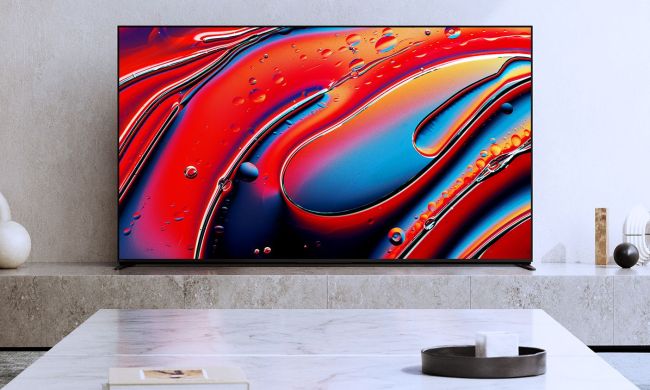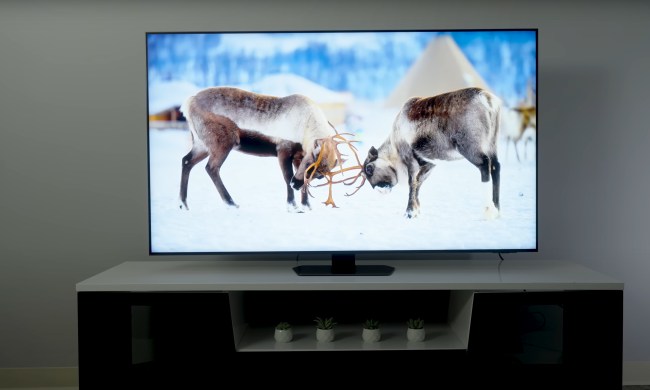The TV buying debate often comes down to a few questions: LCD or OLED? Am I focused on a brand like Samsung or LG or Sony? Or do I want to squeeze the most value out of my dollar? You’re asking the wrong questions, according to Chinese TV giant Hisense. Consider this one, instead: What if you could have it all?
The Hisense ULED XD is essentially two LCD panels bonded together, and then smooshed into a TV the same size as the one you currently have. Throw in the company’s proprietary chipset, a bunch of buzzwords, and a whole mess of secret sauce and you’ve got something remarkable. Hisense says this technology will offer blacks as dark as midnight on a moonless night and the brightness of today’s LCDs — all at the cost you’ve been craving. If it’s true, Korea’s powerhouses should be trembling. So how did the Chinese company do it?
“We invest 5 percent of profits annually back into R&D,” Chris Porter, Director of Product Management for Hisense, told Digital Trends. “We have some incredible technology in house, much of which we never bring to the U.S. This project is an exception. We intend to commercialize it in 2020.”
The company has been working on ULED technology – which is really a suite of features more than just a single technology – since 2005, but we first saw the unique ULED XD and its dual panel design at CES 2019. The company said it planned to combine a 1080p panel with a 4K panel. But why stop there?
“Behind the scenes we were working in conjunction with some partners of ours to scrap the idea of a 2K luminance panel and use two 4K panels, one for black and white and one for color,” Porter said. Why two panels, you ask? The tech is the definition of thinking outside the box: OLED is well known for its remarkable black levels, which get as dark as they do because such displays simply turn off individual pixels. But LCD pixels can’t be shut off, meaning there’s usually a little light that shines through in the darkest scenes.
In the ULED XD, each LCD module has a different function to combat that issue: One panel is for color, the other for grayscale, or luminance. The grayscale module essentially becomes the backlight, meaning in the dark spots of an image, it simply doesn’t shine light through the color panel and out to your eyeballs — meaning darks are really, really dark. Modern LCD TVs measure local dimming zones in the dozens, or even hundreds, a way of working around LCD’s challenges with blacks. Hisense claims to have 8.3 million dimming zones, because it’s controlling light at the pixel level.
“Instead of just utilizing zones or little blocks … we’re able to take local dimming all the way down to the pixel level.” (For more details on what exactly local dimming zones are, see our primer here.)
The company says it has black levels 100 times blacker than today’s fanciest LCDs. That’s pretty black – and in real life, it sure looked black. Meanwhile, the color just pours out of the set, with over 1,000 nits of brightness.
Hisense showed me a handmade set marrying a 1080p panel and a 4K panel, side by side with a very fancy OLED set. The comparison was striking: Blacks as deep as space, right next to colors that glowed with all the power of LCD. The company couldn’t bring the even fancier model, with two
Oh yeah, and then there’s quantum dot technology, a hot buzzword that basically means better color. It was always there, Hisense says, allowing the company to claim 100% DCI-P3, a hot buzzword that basically means a measurement of better color. Yup, it’s in there.
Hisense isn’t prepared to offer release dates beyond 2020, and the company says it’s too early to put a price tag on the tech and televisions that will use it, other than to say they’ll be noticeably cheaper than the OLED sets that they aim to supplant. What’s most impressive about the new technology is what it means for the brand as a whole. Those questions you might be asking yourself when you consider buying a new TV? One is usually about brand, and for many people, that comes down to two or three names at best. Hisense wants to play in that crowd – this technology might be good enough to get the company there.


